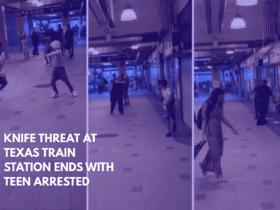Lubbock, Texas is home to many beautiful trees that add charm and shade to neighborhoods and streets. But did you know the city has strict rules about what trees can be planted and where they can go? If you live in Lubbock or are planning to plant a tree near your home, it’s important to understand these rules to avoid any fines or legal issues.
Trees You Can’t Plant in Lubbock
While trees bring natural beauty, not all species are welcome—especially along public roads and sidewalks. According to Lubbock city ordinances, the following tree species are banned from being planted along streets and roadsides:
- Ash
- Sycamore
- Cottonwood
- Willow
- Maple
- Poplar
These trees are often restricted because they grow too fast, become messy, have weak wood, or cause problems with sidewalks and sewers.
Trees You Can Plant Along Streets in Lubbock
Don’t worry—there are still plenty of beautiful, city-approved trees you can enjoy on your property or along public paths. Here are some popular choices you’ll often see in Lubbock:
Small Trees:
- Crabapple
- Crape Myrtle
- Mesquite
- Pinion Pine
Medium Trees:
- Cedar Elm
- Pistachio
- Live Oak
Large Trees:
- Pecan
- Red Oak
- Sweetgum
- Lacebark Elm
Each size group is better suited for different locations. Small trees are perfect for tight spaces, while larger trees work better in open areas like parks or wide yards.
Fun Fact About Willows
The classic weeping willow is actually a hybrid—created from the Chinese Peking willow and the European white willow. While beautiful, these trees are known for their high water use and fragile branches, which is why they’re restricted in many cities.
Tree Planting Distance Rules in Lubbock
Lubbock’s tree laws aren’t just about types—they’re also about where you plant them. Here’s what you need to know:
- Small trees must be planted at least 4 feet away from any curb.
- Medium and large trees need a 6-foot buffer from curbs.
- Overhead wires require a 10-foot clearance below them—no trees should be planted underneath.
- For underground utilities like sewer or water lines, trees must be at least 5 feet away.
These rules help prevent root damage to utilities and ensure that trees don’t block road visibility or interfere with power lines.
Don’t Trim Public Trees on Your Own
If a tree on public property is bothering you—maybe it’s dropping leaves or blocking your view—you can’t trim it yourself. It’s against the law to interfere with city workers or try to handle public trees on your own.
Only trained city agents are allowed to prune, cut, or manage trees on public land. If you have a concern, it’s best to contact the City of Lubbock Parks and Recreation Department or Public Works.











Leave a Reply